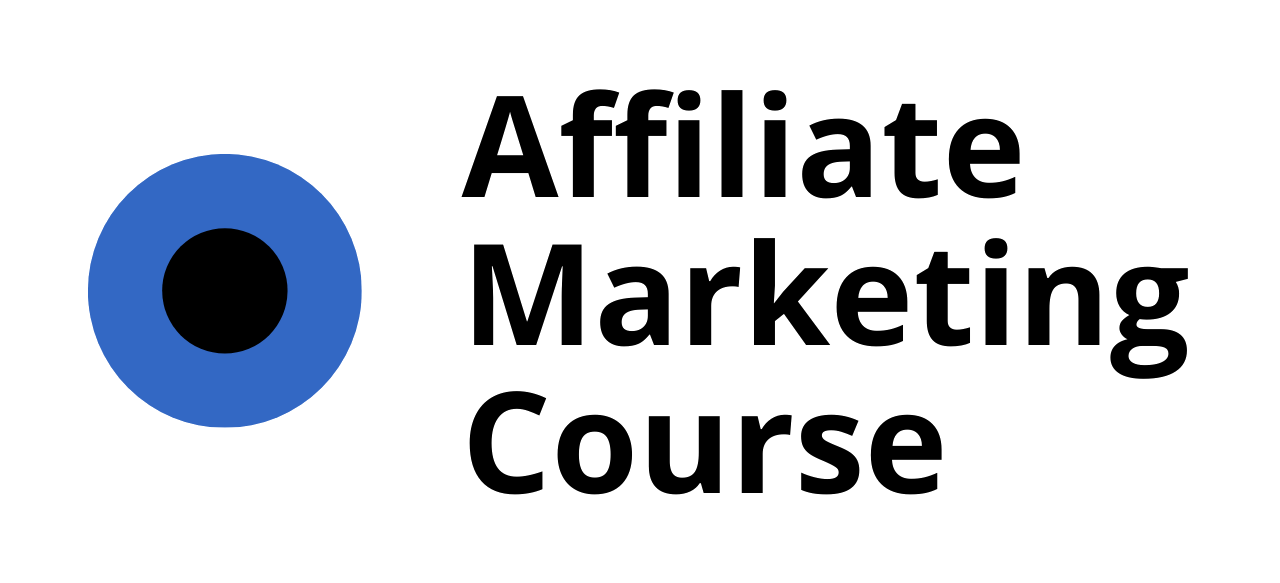Starting your journey into affiliate marketing can be both exciting and overwhelming, especially when it comes to crafting effective strategies to maximize your returns. One of the most critical tools in your arsenal for beginners is the affiliate marketing funnel—a structured approach designed to guide potential customers from initial discovery to eventual conversion. While the concept may seem complex at first, understanding the fundamentals of how affiliate marketing funnels work can simplify the process and significantly boost your chances of success. In this comprehensive guide, we’ll explore what makes an affiliate marketing funnel effective, the key components driving its effectiveness, and how to strategically design one to maximize your ROI. Whether you’re just starting out or looking to refine your existing strategy, this article will provide valuable insights and practical tips to help you achieve your goals. Let’s dive in and uncover the secrets to creating a funnel that not only attracts but also converts your audience effectively.
Key Takeaways
– Understanding Affiliate Marketing Funnels: A structured pathway guiding customers from brand awareness to purchase, simplifying the marketing process and boosting conversions.
– Funnel Stages: Consists of Awareness, Interest, Decision, and Action stages, each guiding customers seamlessly toward making a purchase.
– Benefits of Funnels: Automates lead generation, reduces confusion, increases conversions, and builds trust, making them ideal for beginners.
– Tools for Building Funnels: Popular options include ClickFunnels, Leadpages, and WordPress plugins, offering templates and features for designing and optimizing funnels.
– Strategic Design for ROI: A well-designed funnel maximizes ROI by streamlining processes, driving targeted traffic, and fostering repeat purchases.
– Key Components: Attraction, Interest, Decision, and Action stages, supported by quality products, targeted traffic, optimized landing pages, and automated email follow-ups.
– Best Practices: Test and optimize, focus on a target audience, use outbound links wisely, and build a loyal community to ensure long-term success.

What Makes an Affiliate Marketing Funnel Effective for Beginners?
An effective affiliate marketing funnel for beginners is a well-structured, multi-step process designed to guide users from initial interest to successful conversion. Here’s how it works:
- Education and Content Creation : Start by providing valuable content to establish trust and knowledge. Create blog posts, tutorials, and guides that explain the basics of affiliate marketing, helping users understand the concept before getting involved.
- Email List Building : Build an email list using lead magnets like free eBooks, checklists, or guides. Offer these resources in exchange for email addresses to begin nurturing leads and keeping them engaged.
- Product Selection and Partnerships : Guide users through selecting the right products or affiliate programs. Consider factors like commission rates, conversion rates, and customer satisfaction. Provide tools or calculators to help them find the best fit for their audience.
- Landing Pages : Create dedicated landing pages for each campaign. These pages should be simple, focused, and include high-quality visuals along with clear calls-to-action (CTAs) to drive conversions.
- Social Proof and Testimonials : Incorporate testimonials and success stories from other affiliates or customers to build credibility. Showcase real-life examples or statistics to demonstrate the effectiveness of the program.
- Step-by-Step Guides : Develop a detailed, easy-to-follow guide that outlines the affiliate marketing process. Break it down into manageable steps, covering niche selection, program sign-ups, content creation, and performance tracking.
- Performance Tracking : Equip users with tools or checklists to monitor their progress and optimize their strategies. Track key performance indicators (KPIs) such as click-through rates, conversion rates, and sales.
- Community Building : Foster a supportive community where users can share experiences, ask questions, and learn from others. This can include forums, groups, or live events to enhance engagement and knowledge sharing.
- Continuous Learning and Adaptation : Encourage users to continuously learn and adapt their strategies. Stay updated on the latest trends and optimize their approach based on feedback and results to ensure long-term success.
By following these steps, an affiliate marketing funnel becomes a powerful tool for helping beginners navigate the complexities of affiliate marketing and achieve their goals.
What is a Funnel in Affiliate Marketing?
A funnel in affiliate marketing is a structured pathway that guides potential customers from discovering your offers to making a purchase. It typically consists of several stages designed to engage and convert visitors into paying customers, while maximizing your earning potential through commissions.
Stages of an Affiliate Marketing Funnel:
- Attraction Stage : This is where potential customers are drawn to your content, such as blog posts, videos, or social media posts, through targeted ads or organic traffic.
- Interest Stage : Visitors interact with your content, showing interest in your affiliate offers. They may click on your affiliate links to learn more about the products or services.
- Engagement Stage : Visitors are prompted to take specific actions, such as signing up for an email list, downloading a resource, or opting into a newsletter.
- Nurturing Stage : Leads are educated and nurtured through automated emails or personalized content to keep them engaged and build trust.
- Conversion Stage : The final step where visitors are encouraged to make a purchase, often through special deals, limited-time offers, or clear calls to action.
- Loyalty Stage : Returning customers or those who didn’t purchase initially are re-engaged to encourage repeat purchases or referrals.
Why Are Funnels Essential for Beginners?
1. Streamlined Process
- Funnel systems simplify the affiliate marketing process by organizing strategies into clear stages, making it easier for newcomers to navigate and execute effectively.
2. Improved Conversion Rates
- By optimizing each stage of the funnel, you can identify weak points and enhance them, leading to higher conversion rates and increased commissions.
3. Targeted Traffic
- Funnels allow you to attract and retain highly targeted audiences, increasing the likelihood of conversions and boosting overall campaign effectiveness.
4. Scalability
- As your affiliate marketing business grows, funnels can scale with your needs, accommodating larger volumes of traffic and more complex customer journeys.
5. Data-Driven Insights
- Funnel analytics provide valuable insights into customer behavior, enabling you to adjust strategies and improve outcomes based on measurable data.
6. Building Relationships
- Even if a customer doesn’t purchase immediately, a well-designed funnel keeps them engaged through email lists or continuous content updates, fostering long-term relationships and potential repeat purchases.
By leveraging a funnel, you can create a more effective and efficient affiliate marketing strategy, helping you to build a sustainable and profitable online business.

Benefits of Using Affiliate Marketing Funnels for Beginners
Using affiliate marketing funnels offers several advantages for newcomers to the field:
- Ease of Use: Funnels simplify the process of guiding visitors from initial contact to conversion, reducing the complexity of traditional sales processes.
- Automation: Many tasks within the funnel can be automated, freeing up time for other marketing activities and scaling efforts efficiently.
- Performance Tracking: Advanced analytics tools allow you to monitor the effectiveness of each step in the funnel, enabling data-driven optimizations for better results.
- Monetization Opportunities: Affiliates earn commissions through the funnel, providing a direct revenue stream without needing to sell products directly.
- Scalability: Once optimized, funnels can continue to generate leads and sales with minimal maintenance, making them ideal for long-term strategies.
- Flexibility: Various funnel types cater to different marketing approaches, allowing you to tailor the strategy to your specific audience and niche.
- Relationship Building: Consistent delivery of valuable content fosters trust and loyalty, encouraging repeat visits and referrals from your audience.
- Cost-Effectiveness: Compared to traditional advertising, funnels often offer a higher return on investment due to their targeted approach and measurable outcomes.

What is a Funnel in Affiliate Marketing and How Can It Help Beginners?
A funnel in affiliate marketing is a structured pathway that guides potential customers from their initial introduction to your brand through to making a purchase. It simplifies the marketing process, making it easier for both you and your audience to follow a clear path toward conversion.
The Stages of an Affiliate Marketing Funnel
- Awareness: Prospects first become aware of your brand, product, or service through various channels like social media ads, blog posts, or video content.
- Interest: Visitors engage with your content, such as reading a blog post or watching a video, showing they’re interested in what you’re offering.
- Decision: Prospects gather more information, read reviews, or receive personalized recommendations before deciding to make a purchase.
- Action: The final step where the prospect completes the purchase, earning you a commission as an affiliate.
How a Funnel Helps Beginners Achieve Their Goals
- Automated Process: A well-designed funnel automates lead capture, nurturing, and conversion, saving you time and effort compared to manual marketing efforts.
- Reduces Confusion: By providing a clear path, funnels eliminate uncertainty and help visitors move smoothly from one step to the next without getting lost.
- Increases Conversions: Funnel stages are optimized to guide visitors toward taking action, increasing the likelihood of conversions and helping you earn commissions.
- Built-In Trust: A structured funnel fosters trust, as visitors feel guided and supported throughout their journey, leading to more confident purchasing decisions.
Tools to Build Your Funnel
To create an effective funnel, consider using platforms like ClickFunnels , Leadpages , or WordPress plugins such as WooCommerce . These tools offer templates and features tailored to help you design and optimize your funnel.
Conclusion
A funnel is a powerful tool for affiliate marketers, especially beginners, as it streamlines the marketing process, reduces confusion, and increases conversions. By leveraging a funnel, you can efficiently guide your audience from awareness to purchase, ultimately growing your affiliate marketing business effectively.
What is a Funnel in Affiliate Marketing and How Can It Help Beginners Make Money?
An affiliate marketing funnel is a strategic pathway designed to guide potential customers through targeted steps, ultimately converting them into paying clients. This structured approach is particularly beneficial for newcomers to affiliate marketing, as it simplifies the process of attracting visitors, engaging them, and encouraging them to take action, such as making a purchase.
Key Components of an Affiliate Marketing Funnel
- Attraction Stage :
This is the initial phase where potential customers are drawn to your offerings. Strategies include content marketing, social media engagement, and SEO to attract visitors to your landing page or website. - Interest Stage :
Once visitors are attracted, the next step is to engage them with valuable content. This could be through blog posts, videos, or email marketing campaigns that provide insights or solutions to their problems. - Decision Stage :
Here, the goal is to convince visitors that your product or service is the best solution. Testimonials, special offers, or limited-time promotions can be effective in influencing decisions. - Action Stage :
This is where the affiliate link is placed, directing visitors to make a purchase. The effectiveness of this stage depends on clear CTAs (Calls-to-Action) and a seamless user experience.
Benefits of Using a Funnel for Beginners
- Streamlined Process :
A funnel eliminates the guesswork by providing a clear path from attraction to conversion, making it easier for beginners to focus on what works. - Higher Conversion Rates :
By guiding visitors through relevant and personalized content, funnels can significantly boost conversion rates, directly impacting affiliate earnings. - Scalability :
Once a funnel is optimized, it can be scaled by adding more traffic sources or refining strategies without starting from scratch. - Repeat Customers :
A well-designed funnel can also foster repeat purchases, creating a recurring revenue stream for affiliate marketers. - Automation Tools :
Platforms like ClickFunnels, Leadpages, and even WordPress plugins offer user-friendly tools that allow beginners to create and manage funnels without extensive technical knowledge.
Example of a Simple Funnel for Beginners
- Content Creation :
Start with a blog post or video that highlights the benefits of a specific product or service. Include a compelling headline and a clear CTA to visit a landing page. - Landing Page :
Create a dedicated landing page that captures visitor information, such as email addresses, in exchange for a free resource or discount code. - Email Nurture Sequence :
Send follow-up emails with additional valuable content, testimonials, or exclusive offers to keep prospects engaged. - Affiliate Offer :
Direct visitors to your affiliate partner’s product page or checkout process via a unique affiliate link, ensuring tracking and commission attribution.
By following these steps, you can create a funnel that effectively guides visitors toward becoming paying customers, thereby maximizing your affiliate marketing efforts.
Tools for Building Your Funnel
- ClickFunnels : Known for its ease of use and comprehensive features, ClickFunnels is a popular choice among beginners.
- Leadpages : Offers a variety of templates and tools to quickly create high-converting landing pages.
- WordPress Plugins : There are numerous plugins like OptimizePress or Thrive Themes that can help you build funnels directly on your WordPress site.
Best Practices for Success
- Test and Optimize : Continuously monitor your funnel’s performance and make adjustments based on analytics.
- Focus on Target Audience : Tailor your funnel to the specific needs and interests of your audience for better engagement.
- Use Outbound Links Sparingly : Link to relevant resources or tools within your content to enhance user experience without overwhelming them with external links.
By leveraging the power of a well-structured affiliate marketing funnel, beginners can efficiently attract, engage, and convert their audience, paving the way for sustained success in their affiliate marketing endeavors.

Key Elements for Creating an Affiliate Marketing Funnel
Creating a successful affiliate marketing funnel requires focusing on several critical aspects. Here’s a breakdown of the essential elements to consider:
- Choosing the Right Platform
- Selecting a reliable platform or software that aligns with your business goals. Whether it’s WordPress, Shopify, or a custom-built solution, ensure it supports affiliate marketing features like tracking and analytics.
- Opting for scalable solutions that can grow with your business. A robust platform ensures smooth operations as your affiliate program expands.
- Defining Your Target Audience
- Understanding your ideal customer profile, including demographics, interests, and behaviors. Tools like Google Analytics can help refine this understanding.
- Segmenting your audience to tailor promotions effectively. Personalized campaigns often yield better conversion rates.
- Selecting Quality Products
- Picking high-quality, reputable products to promote. These products should align with your audience’s needs and preferences.
- Researching product commissions and margins to ensure profitability. Look for programs offering competitive earnings per click (EPC) rates.
- Driving Targeted Traffic
- Implementing effective marketing strategies to attract your target audience. This includes content marketing, social media promotion, and paid advertising.
- Using SEO techniques to optimize your landing pages and content for search engines. Higher search engine rankings lead to more organic traffic.
- Optimizing Landing Pages
- Crafting compelling landing pages that capture leads and drive conversions. Use clear CTAs (calls to action) and persuasive copy to encourage sign-ups or purchases.
- A/B testing different landing page designs to identify what resonates most with your audience. Data-driven decisions improve conversion rates.
- Automating Email Follow-Ups
- Setting up automated email sequences to nurture leads and retain customers. Welcoming emails, drip campaigns, and re-engagement emails can significantly boost engagement.
- Personalizing email content to match individual recipient preferences and behavior. Personalization increases open rates and click-through rates.
- Building a Community
- Fostering engagement through forums, social media groups, or exclusive member areas. A strong community fosters loyalty and repeat purchases.
- Encouraging user-generated content and reviews to build trust and credibility with your audience. Positive testimonials enhance your affiliate program’s reputation.
- Tracking Performance
- Utilizing analytics tools to monitor campaign performance, including click-through rates, conversion rates, and earnings. This data helps refine your strategies.
- Regularly reviewing reports to identify underperforming campaigns and make necessary adjustments. Continuous optimization improves overall results.
- Scaling Effectively
- Expanding your affiliate network by recruiting additional affiliates who share your target audience’s interests.
- Introducing tiered commission structures to incentivize affiliates to bring in more referrals and sales.
- Ensuring Compliance
- Familiarizing yourself with industry regulations, such as FTC guidelines, to avoid legal issues and maintain trust with your audience.
- Providing clear disclosure policies on your website to transparently communicate affiliate relationships.
- Developing a Long-Term Strategy
- Planning for sustained growth by diversifying your traffic sources and exploring new marketing channels regularly.
- Investing in ongoing education and staying updated with the latest trends in affiliate marketing to stay ahead of competitors.
By focusing on these key elements, you can build a robust affiliate marketing funnel that drives consistent results and fosters lasting partnerships with your affiliates and customers.




0 Comments